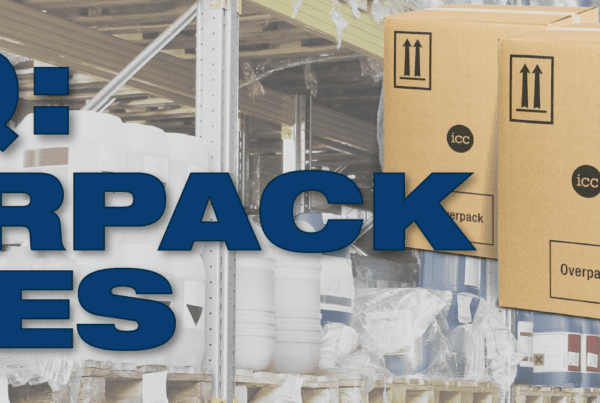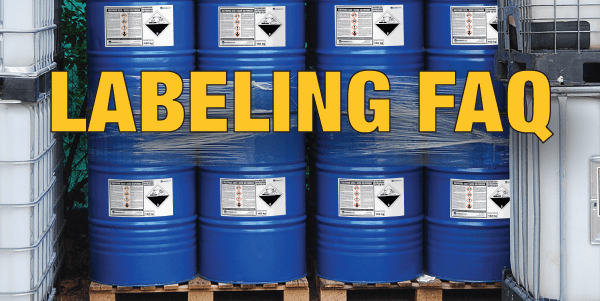Following rules from multiple organizations (IATA/ICAO) can make training requirements confusing.
Who needs to be trained to ship dangerous goods by air?
- In the United States: The US DOT requires that employees handling hazardous materials be trained regardless of the mode of transport. If a shipper is going to use the international regulations, then that person must be trained in those regulations (§172.704(a)(ii)).
- In Canada: Section 6 of the TDGR requires anyone who is handling, offering for transport, or transporting dangerous goods to be trained and have a certificate. Section 12 states that for shipping by air, the ICAO Technical Instructions shall be used for both international and domestic shipments.
IATA requires that each person be trained according to Table 1.5.A Minimum Requirements for Training Curricula of Section 1.5.2.
When is retraining required?
- In the United States: Employees must be retrained every three (3) years. If an employee’s job responsibilities change, then they must be retrained within 90 days of the change.
- In Canada: The TDGR states that the training certificate for shipping by air expires after 24 months, therefore retraining must occur every 24 months.
Under IATA, recurrent training must take place every 24 months after the initial training unless the competent authority has defined a different period.
Why is ICC's initial training 3 days in length?
International shipments must comply with both the ICAO Technical Instructions as well as national regulations. In order to meet commercial standards, shippers are also required to meet the IATA Dangerous Goods Regulations. Furthermore some countries and airlines have filed variations to many of these requirements. Failure to comply with any of these may result in legal charges but most importantly costly delays! Some of the topics covered are:
- Overview of national and international regulations on transport of dangerous goods by air
- Shipper’s responsibilities
- Training requirements
- State and operator variations
- Special provisions
- 7 Steps to Compliance
- Using the List of Dangerous Goods and packing instructions
- Limited Quantities
- Excepted Quantities
- Amendments and updates
If I'm trained for shipping by air, do I need to be trained in the national regulations?
- In the United States: For US employees, the answer is ‘yes’. You must have function specific training, safety training and security awareness training, among others in order to be compliant with 49 CFR.
- In Canada: The TDGR section 6.2 requires that a person must be “adequately trained” which means that they have sound knowledge of the regulations for the job they do—including the handling and transporting of dangerous goods, offering dangerous goods for transport, and the topics listed in this section.
What must be included in my training records?
- In the United States:
- The employee’s name,
- The most recent training completion date of the employee’s training,
- A description, copy, or the location of the training materials used to meet the requirements,
- The name and address of the person providing the training; and
- Certification that the employee has been trained and tested, as required.
- In Canada: Section 6.6 of the TDGR states that an employer must keep a record of training and a copy of the training certificate from the date of issue until two (2) years after it expires.
How long must my employer or I retain the training records?
- In the United States: Training records must be kept as long as the person is an employee or for 90 days after their employment ends.
- In Canada: The TDGR requires retention from the date of issue until two (2) years after the training certificate expires.
Who writes the rules for shipping by air?
The rules are written by ICAO, which are called the Technical Instructions for the Safe Transport of Dangerous Goods by Air. IATA is a trade association of airlines which takes the Technical Instructions and puts them in a format that is easy to use and understand. The IATA Dangerous Goods Regulations incorporate all of the ICAO Technical Instructions and some airline restrictions that are not defined by ICAO. As IATA member airlines use the IATA Dangerous Goods Regulations, this should be what air shippers are compliant with.
Who or what is ICAO, and where does it fit in?
ICAO is the International Civil Aviation Organization, an agency of the United Nations. ICAO was formed as a result of the Chicago Convention of December 1944. It is charged with (among other things) the development and maintenance of the Technical Instructions for the Safe Transport of Dangerous Goods by Air – the set of international rules for shipping dangerous goods by air. These Technical Instructions are based on the UN Recommendations on the Transport of Dangerous Goods – Model Regulations. ICAO, as well as IATA, is headquartered in Montreal, Canada.





